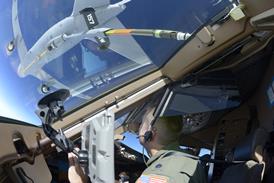Sir - It is obvious, after reading the series of letters on non-precision and precision approaches, that a wide variety of pilots reads Flight International.
All approaches, whether precision or not, start from an altitude where obstacle clearance is guaranteed and, from there, on descend towards the airfield or runway. At the end of the approach, you either land or go-around. This moment is critical: you are flying low (between 300ft (100m) and 0ft on a runway approach), and at low speed. Manoeuvring close to the ground without visual reference is dangerous, which is why an approach in its final part should be stabilised in speed, thrust and configuration.
This is one reason why many major airlines promote non-precision approaches to be flown in a stabilised way. A safe vertical profile for an approach is to start with a descent point and then a constant (2.5-3.5¡) slope towards the landing threshold (taking into account all minimum crossing altitudes).
Reaching minimum descent altitude too early, the missed-approach point may only be approached when visual (ground) reference is achieved, or, for example, when flying a Boeing 737 above 600ft above ground level (AGL), for example, and 1,000ft AGL for a Boeing 747.
If these conditions cannot be met, and if the aircraft is of medium weight (10,000kg maximum take-off weight, or heavier), the only safe way out is to go-around.
ERIK JULIAN-LABRANA
CAPTAIN BOEING 737
Amsterdam, The Netherlands
Source: Flight International























